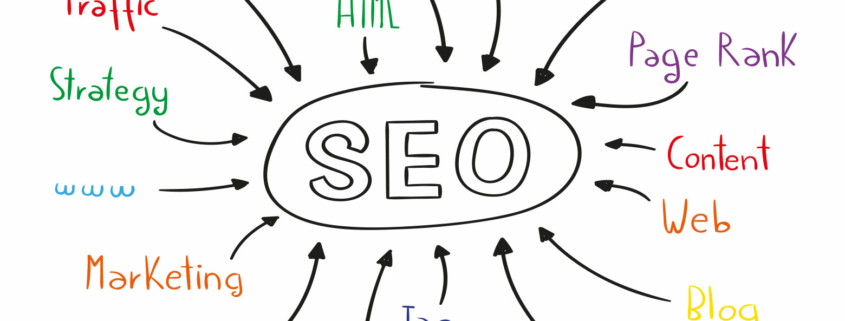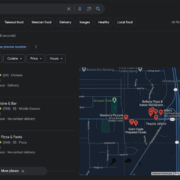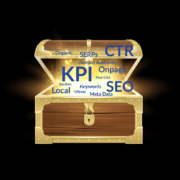Boost Your Website’s SEO With These Simple Tactics
Many people look for businesses, services, and products using a search engine. Honestly, who doesn’t? But how many people go on to the second or third page? Here’s the harsh truth: if you’re not on the first page, you’re invisible. An effective SEO strategy shows you more frequently in organic searches. Higher visibility leads to more organic traffic, more leads, and, ultimately, more revenue. So what do you need to do? Let’s talk about some basic SEO strategies, shall we?
Understanding SEO
SEO stands for search engine optimization. Essentially, your website needs to be optimized to be understood by search engines and climb the search rankings. Every time someone searches on Google, Bing, or another search engine, web pages are analyzed to see which ones provide the most relevant content. The Google algorithm is an evolving, complicated beast, but it can be conquered!
Your goal is to ensure you’re seen by those who are searching for the products and services that you offer. By creating an SEO strategy you can implement quickly, you can be sure that you’re seen in more search engine result pages (SERPs). There are many ranking factors to consider, but let’s take a look at some of the basic tactics that can earn you some easy wins.
SEO Strategies to Implement NOW
Whether you have an ecommerce site or a business page, it’s never too late to start an SEO strategy. If you’re not already deploying various SEO tactics, there are things that you can do right away.
Conduct Keyword Research
Before you can really and truly focus on an SEO strategy, you need to know what your keywords are — plus the search intent (why someone’s looking up something in the first place) behind them.
Put yourself in your customers’ shoes. What keywords or search terms would they use to find what you offer? These are your target keywords; there are both short-tail and long-tail keywords to implement.
We love a good cake, so let’s use an example of a baking supply company. Bakers are going to be searching for their products. Short-tail keywords may be things like “decorating bags” or “baking pans.” Long-tail keywords may be “decorating bags for buttercream frosting” or “quality baking pans for sheet cakes.” Assume that there are consumers that search the basics while others go more in-depth.
Some SEO tools are free online for basic research. One popular keyword tool is Ahrefs, where you can see metrics like keyword search volume to help guide your content strategy.
Create High-Quality Content
Let’s break it down; the more quality content you have, the more the search engines consider you an expert within your industry. Try to add new content on a fairly regular basis so your site doesn’t get stale.
The content you create can vary:
-
-
- Blogs
- Service pages
- Podcasts
- Videos
-
As you create various pieces of content, sprinkle relevant keywords within your content and headlines and subheaders.
But watch out! Keep an eye on keyword density. Many believe that the preferred density is between 1 and 2%. Don’t let your eyes glaze over; we’ll explain. What this means is that you don’t want to mention a keyword more than once or twice within 100 words. When you repeat the same keyword over and over again, it looks like keyword stuffing and the SEO police WILL come after you.
Optimize Your Pages
Technical SEO refers to the “structure” of your website and helps put it in context for web crawlers so search engine bots can understand what it offers. Each page of your site should be optimized (a.k.a. onpage SEO). Take the time to ensure that each page title includes some of your keywords. You don’t want generic title tags like “Services” or, even worse, a series of numbers and letters that becomes the default for some web builders.
Find the title element on your page to ensure you include relevant keywords. But don’t make it too long and bore whoever tries to read it. And don’t use the same title on every page. Get creative. Have some fun.
Beyond the title, you should also be filling out the meta description. Create a sentence – or two – that accurately describes the content featured on that specific page. Meta descriptions are just snippets or real quick bits. Make them a succinct and enticing preview of what searchers can expect on that page.
Additional meta tags such as H1s, H2s (aka subheadings), and alt text (using keywords to describe each picture or image) can better signal to search engines what your content is about and the types of search queries it’s relevant to.
Build Links
Link building is a great way to boost your SEO algorithm and boost your reputation at the same time. The more reputable and authoritative websites can include links to other sites. You want them to include links to your site (and social media, too).
How do you go about link building? There are a few tried-and-true ways:
-
-
- Create content that other businesses want to link to
- Promote relevant publications
- Establish partnerships
- Write reviews and testimonials
- Ask to be a guest blogger
-
By searching for the higher domain authority sites, you can be sure you’re getting quality backlinks. And remember, it goes both ways. Just as a company may offer to host your links, you should do the same for them.
In addition to focusing on links from outside sources, you should also analyze your internal links. When done intentionally and logically, links from one page to another within your own site can also help search engines understand the overall context.
A quick pro-tip: when you’re linking through your content, make sure the link matches its anchor text (“anchor text” links to an article on Semrush about – you guessed it – anchor text).
Enhance the User Experience
The user experience is important for several reasons. Obviously, you want people to be able to easily navigate your website and find what they are looking for. However, a good user experience can also help your search engine ranking.
Google and other search engines prioritize sites that offer a high experience across all platforms, including desktop and mobile.
This means that you should work closely with your web developer to ensure that your site looks good on a desktop, but is also mobile-friendly.
Here are four ways to boost the user experience:
-
-
- Ensure that the language is well-written and industry-specific.
- Establish clear website architecture to help with navigation.
- Implement a user-friendly layout.
- Check out your page speed by ensuring videos and photos load quickly.
-
Improving user experience may be just what you need to rank higher and allow people to find more of what they’re looking for within seconds of entering your site.
Lift Marketing Can Lead Your SEO Journey
Now that you have some basic SEO strategies to help guide your content marketing strategy, be decisive about executing your plan. The sooner you focus on search engine optimization, the sooner you can be visible to more consumers.
While you can do SEO on your own, it’s more than okay to just look to the experts (*cough, cough* us). If you’re looking for more SEO tips or need help with your digital marketing strategy, reach out to us, the professionals.












